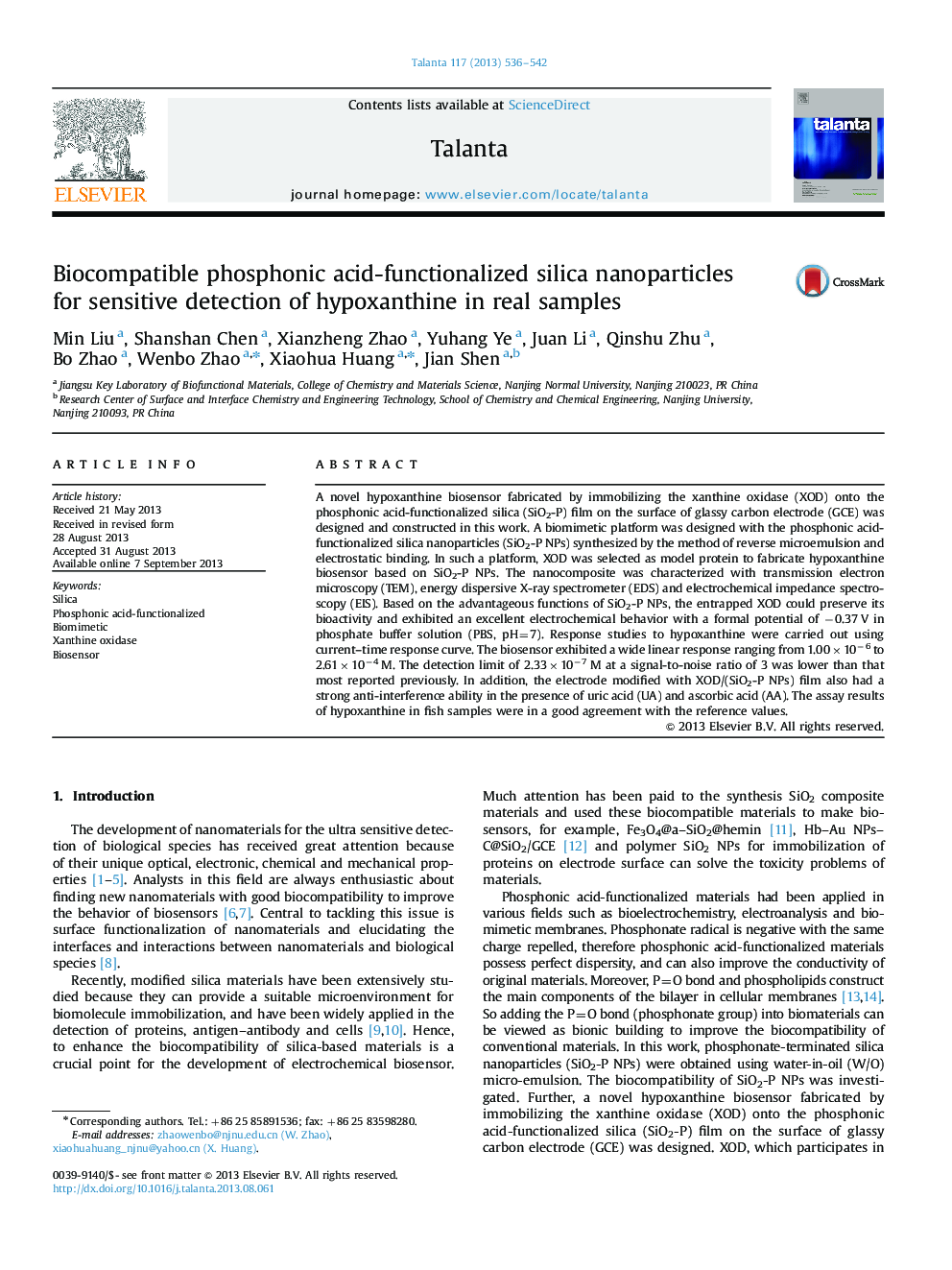| Article ID | Journal | Published Year | Pages | File Type |
|---|---|---|---|---|
| 7682665 | Talanta | 2013 | 7 Pages |
Abstract
A novel hypoxanthine biosensor fabricated by immobilizing the xanthine oxidase (XOD) onto the phosphonic acid-functionalized silica (SiO2-P) film on the surface of glassy carbon electrode (GCE) was designed and constructed in this work. A biomimetic platform was designed with the phosphonic acid-functionalized silica nanoparticles (SiO2-P NPs) synthesized by the method of reverse microemulsion and electrostatic binding. In such a platform, XOD was selected as model protein to fabricate hypoxanthine biosensor based on SiO2-P NPs. The nanocomposite was characterized with transmission electron microscopy (TEM), energy dispersive X-ray spectrometer (EDS) and electrochemical impedance spectroscopy (EIS). Based on the advantageous functions of SiO2-P NPs, the entrapped XOD could preserve its bioactivity and exhibited an excellent electrochemical behavior with a formal potential of â0.37Â V in phosphate buffer solution (PBS, pH=7). Response studies to hypoxanthine were carried out using current-time response curve. The biosensor exhibited a wide linear response ranging from 1.00Ã10â6 to 2.61Ã10â4Â M. The detection limit of 2.33Ã10â7Â M at a signal-to-noise ratio of 3 was lower than that most reported previously. In addition, the electrode modified with XOD/(SiO2-P NPs) film also had a strong anti-interference ability in the presence of uric acid (UA) and ascorbic acid (AA). The assay results of hypoxanthine in fish samples were in a good agreement with the reference values.
Related Topics
Physical Sciences and Engineering
Chemistry
Analytical Chemistry
Authors
Min Liu, Shanshan Chen, Xianzheng Zhao, Yuhang Ye, Juan Li, Qinshu Zhu, Bo Zhao, Wenbo Zhao, Xiaohua Huang, Jian Shen,
